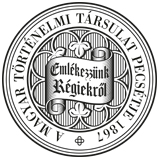Századok – 2015
2015 / 2. szám - KÖZLEMÉNYEK - Nemes Gábor: Magyarország kapcsolatai az Apostoli Szentszékkel (1523-1526)
MAGYARORSZÁG KAPCSOLATAI AZ APOSTOLI SZENTSZÉKKEL (1523-1526) 505 the highest level by the cardinal protector. One of the most important duties of the protector was the administration of the matters concerning the benefices; he would supervise the ecclesiastic lawsuits and carry out deputy’s appointments. After possible antecedents in the 15th century (Gabriele Rangoni, John of Aragon, Rodrigo Borgia, Giambattista Orsini) the first person to be called “cardinal protector of Hungary”, was Cardinal Pietro Isvalies, a former legate to Hungary and an administrator of the bishopric of Veszprém. After Isvalies, Giulio de Medici, Cardinal Vice-Chancellor, a nephew of Pope Leo X, became protector, who ascended the papal throne as Clement VII in 1523. Among his operations as protector we mainly have information about his offering of benefices, besides the fact that he ran the earliest known canonical investigation of Hungarian reference. My researches have revealed that after the election of Cardinal Medici as Pope, Giovanni Salviati became cardinal protector of Hungary. Since in the years 1520 and 1521 he reported about the Hungarian provision at the consistories several times parallel to his relative, Cardinal Protector Giulio de Medici, it can be supposed that he represented Hungarian interests as Vice-Protector that time. Salviati also informed the Pope about the inheritance matter of János Lászai, a confessor father based in Rome, followed the phases of the anti-Ottoman struggle on the Croatian frontier, the matter of the union of the Czech Catholilcs and Utraquists as well as the developments of the discussions between Poland and the Teutonic Knights. To maintain continuous information flow he also ran regular correspondence with Nuncio Burgio. It was the Florentine Francesco Marsuppini who served longest in Rome on behalf of the Kingdom of Hungary. He was a familiar and secretary of Cardinal Tamás Bakócz already in 1511. Later, with some periods of intermission, he officially stayed in Rome for more than two decades. His main duty was to deliver the letters from Hungary to the Curia and report about them before the Consistory. Besides, he provided information to the Buda court and Nuncio Burgio. He was remunerated partly by regular provisions in cash and partly - following the contemporary practice - by benefices. The envoy of the Hungarian king, who spent years in Rome, was István Brodarics, Provost of Pécs, who represented the interests of both the Hungarian court and Poland, since the Polish deputy Bishop Cio3ek of P 'ock had died. Brodarics appeared at the Consistory several times, where he held oratories before the Pope when commenting the letters sent from Hungary. Sometimes he read out the letter before the body of the cardinals and once he translated the speech of the deputy of the Croatian Ban János Torquatus delivered in Croatian into Latin. Besides the Hungarian and the Polish kings he also corresponded with Arch-Duke Ferdinand, and when the Holy Father sent the Cardinal Protector of Hungary, Salviati to Parma, he was also informed about the Hungarian news by way of Brodarics staying in Rome. When Brodarics was away from office, he was substituted by his secretary Imre Kálnai. The Hungarian legation in Rome employed a special commissioner for running the everyday businesses at the different offices of the Curia, namely Egidio Zefiri, who came from the Amelia Diocese in Umbria. Similarly, an experienced person, Pietro Antonio Berri from Parma became the secretary of the Hungarian legation, who had been the scribe of Cardinal Vio during his legate mission to Hungary. In addition to the Hungarian deputies in Rome there were several envoys with ad hoc assignments, who were partly the couriers of the Hungarian court, partly pilgrims who were commissioned with dispatching letters to Rome (i.e. István Brodarics’ brother Mátyás, the late Péter Beriszló’s cousin, János and István Aczél, castellan of Pozsony). The main coordinators of the money transfers between Hungary and the Holy See both in Rome and Hungary were the powerful Fuggers whose overall European connection network was also an important channel of information flow. Most of the dues payable for the different benefices arrived at Rome through the Fuggers and their factors often delivered even the bulls. The papal financial aids deposited with the Fuggers served not only the purpose of defence, but the costs of the papal “legation” in Buda were also partly covered by them. While at the turn of the 15th and 16th centuries the number of Hungarian pilgrims to Rome was conspicuously high, it decreased radically in the years before the Battle of Mohács. However, in spite of the Ottoman threat, the war in Northern Italy and the plague hitting Rome, there were some who ventured to travel even in these years, e.g. István Aczél, the chamberlain László Kanizsai, or András Trepka, royal marshal. The Hungarian confessor fathers provided for the spiritual care of the Hungarian pilgrims in Rome, but during the Holy Year a Croatian confessor also served at St. Peter’s Basilica, namely Andreas Vrecsevics.
